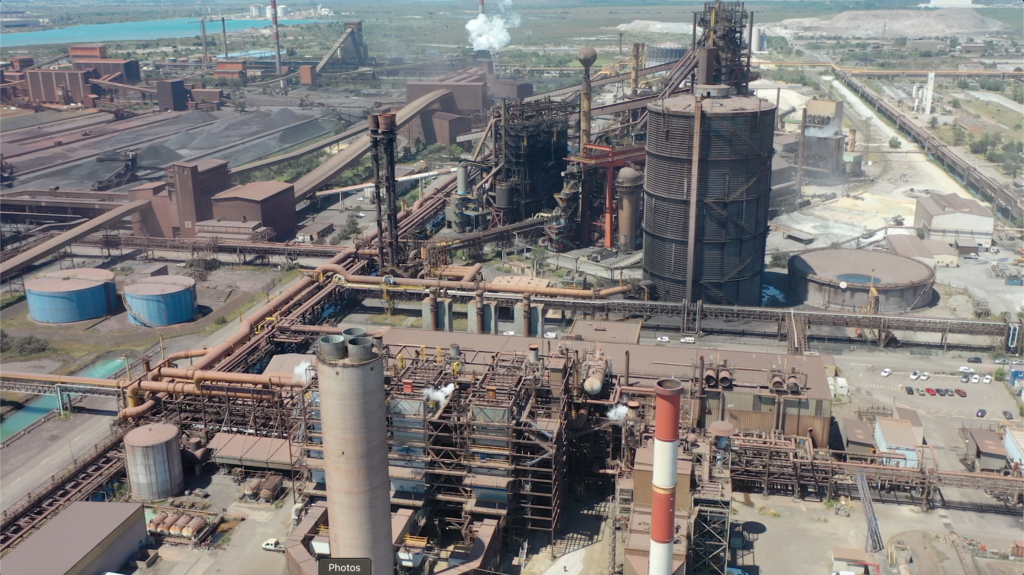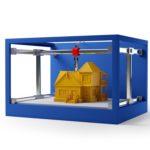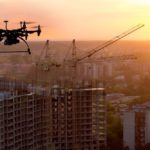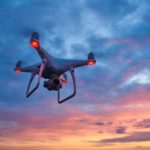Sector - Software & Technology
How steel giant is using drones to improve

ArcelorMittal is a true global industry giant. And when it comes to their impact in the steel industry, you can expect accordingly gigantic numbers; with steel manufacturing facilities in 16 countries around the world, customers in 160 countries, and employing 168,000 workers.
The teams work round-the-clock to supply the steel that modern society is built upon. In 2020, ArcelorMittal shipped 69 million tonnes of steel in the form of coils to all corners of the world.
Extreme condition at steel factories
The steel industry, by its very nature, is an activity with a number of risks. Every day, workers navigate and operate huge, heavy, loud, and incredibly hot machinery. The manufacturing process sees steel reach temperatures as high as 1,600 degrees, and workers find themselves surrounded by liquid steel, giant buildings and massive moving vehicles. Today, the health and safety of the personnel clearly is the #1 priority at ArcelorMittal and in the steel industry in general. According to global statistics gathered by the World Steel Association, the injury rate per million hours worked has decreased from 4.55 in 2006 to 0.97 in 2017, a reduction of 78.67%.

The steel industry is also conscious of being a large source of CO2 emissions, as it needs a lot of raw combustible materials such as coal to produce steel. According to the World Steel Association, steel is responsible for 7 to 9 percent of all direct emissions from fossil fuels.
All these ingredients put together make a steel factory an extraordinary place to work that can sometimes resemble what it would be like to work on Mars. An industrial site of this size and nature keeps workers humble in the face of such a hostile environment, similar to how a sailor respects the power of the sea, or a mountaineer the immensity of the mountain.
The perfect candidate to spearhead a 4th Industrial Revolution
One thing is sure: Steel is an essential material that underpins modern society and daily life. The steel industry is here to stay. And ArcelorMittal is searching for ways to make their plants safer, cleaner, greener, and smarter – not only to protect their workers, but also to reduce their carbon footprint and increase the efficiency of their production sites.
ArcelorMittal understands that new technologies are the key to transforming their production sites and have identified certain solutions that can meet their needs. In particular ArcelorMittal has begun deploying drones at their production sites to perform 3D scans and to facilitate critical industrial inspections, maintenance, and safety operational tasks.
Flying at Fos sur Mer
ArcelorMittal’s plant in Fos sur Mer, near Marseille’s harbor and gateway to the Mediterranean Sea in Southern France, is an important site in Europe with a production capacity of 4 million tons of steel a year. It is as big as a city and employs around 4,000 workers (ArcelorMittal and 3rd parties).
One of these workers is Denis Emeric, Head of Technical Maintenance at Fos sur Mer. He leads a team of 350 workers who devote their energies to maintaining the complex infrastructure and to perform inspection operations.

Denis is acutely aware of how much time it takes for his teams to perform their inspection and maintenance tasks. Inspecting chimneys, pipes or roof structures at a height higher than some of the highest buildings in France (as a matter of a fact, Notre Dame would fit inside the steelshop), not to speak about the steaming heat that can make this task even more complicated.
Traditionally, these routine maintenance and inspection missions are performed by erecting heavy scaffoldings or by using rope access when scaffolding is not possible. Of course, setting up scaffoldings and halting machinery so technicians can climb up and perform inspections is tedious, expensive and potentially hazardous.
Denis Emeric believes he has found the ideal solution to streamline these routine tasks at Fos sur Mer: inspection drones.
With drones, they can acquire sharp visual data on critical assets and machinery, all while keeping their feet safely on the ground.
Decades of experience with aerial camera technology
“We have long history with the use of remote controlled aircrafts, and we understood very early the benefits of using aerial camera technology.” says Ronald Kefferstein, Head of the Maintenance Team, with 30 years experience at ArcelorMittal.
“In fact we are proud to have been portrayed by the French media as true pioneers within the industry in France since we adopted air balloons with cameras in 2004 and started using remote controlled helicopters with cameras back in 2010. We gradually moved onto drone technology since they became readily available and made perfect sense to us.”

Because of their early adoption, the plant of ArcelorMittal Fos sur Mer has gained a significant experience in using aerial camera technology for inspections in the last decades, and is now a major contributor to ArcelorMittal’s Drone Cell Division Worldwide.
All ArcelorMittal plants, including 30 industrial sites from Europe, Africa, America, Asia and Australia, organize web conferences each quarter where they share best practices and push for smarter integration of drones.
The ArcelorMittal drone program
Today, the drone team at ArcelorMittal Fos sur Mer is led by Yassine Ben Kacem, who leads 6 pilots. There is never a dull moment in the steel factory and his team’s expertise is requested and praised daily. Yassine Ben Kacem’s team frequently performs a variety of missions ranging from inspection, maintenance, thermal and stockpile surveying and more.
Their drone of choice
Yassine Ben Kacem’s fleet has evolved over the years, but his drone of choice these days is DJI Mavic 2 Enterprise Advanced. The drone team uses a wide variety of drones, including heavy duty Matrice series platforms, but the Mavic 2 Enterprise Advanced has quickly carved out its own niche in the ArcelorMittal fleet.
“We need to be able to plan and execute our missions in minutes. The Mavic 2 Enterprise Advanced with its RTK capabilities and that can be deployed in the air within minutes is crucial for us.” says Yassine Ben Kacem.

Yassine has found that the M2EA is ideal for quick, close inspection of difficult-to-reach installations thanks to its smaller size. For larger scale inspections, for example of a length of piping that spans hundreds of meters, he prefers his M210 with Z30, but for everything else the M2EA is ideal.
One of the most relevant features for their missions, along with the powerful thermal camera for a drone of this size, is the RTK module. It allows them to survey their stockpile very precisely while making less use of geometers that will take much longer to get the job done.
“We find the Waypoint function very helpful as it gives us the possibility to record a flight and mission path which can be reused repeatedly for future missions, hence to perfectly replicate the flight path of the drone and enabling an accurate comparison of data.”
The drone applications at ArcelorMittal Fos sur Mer
Inspections
Drones are now used for all inspection tasks at height, such as roofs, conveyors, or other areas that are difficult to access. Now, AcelorMittal’s trained technicians only need to climb scaffolding after a drone inspection identifies areas that require repairs.
Surveying
Surveying and measuring stockpiles of raw materials is a time-consuming, routine task that requires precision. Drones allow ArcelorMittal to complete these tasks quickly with very high precision.
“Using drones for stockpile surveying and monitoring helped us gain a tremendous amount of time,” says Ronald Kefferstein.
“Before drones, we had to send surveying professionals such as Geometers, around and between all these stockpiles of raw materials. Today, with the use of photogrammetry enabled by drones, we can do this tedious job in one hour, while compiling precise data, and while keeping our workers safe.”
Thermal Monitoring
Thanks to the DJI Mavic 2 Enterprise Advanced’s high precision thermal camera, ArcelorMittal can monitor the heat and temperature of their infrastructure and equipment. One example are the chimneys of their installations which reach extraordinarily high temperatures up to 1600 Celsius, the temperature of the fusion of steel.
“Being able to have a live thermal image is critical on our sites. The heat coming out from a chimney is invisible and only a thermal camera can help us get a clear vision of what is going on,” says Ronald Kefferstein.
Environmental monitoring
“The ArcelorMittal site in Fos sur Mer is surrounded by a nature reserve of hundreds of acres. It is made up of fresh water and salt water coastal wetlands.

This area is unique in France and is host to large variety of rare fauna and flora species.”
In fact, the ArcelorMittal site is right at the gate of the French Camargue countryside, home of many wild horses and bulls and also rice paddies that make it a very particular and exotic region of France.
ArcelorMittal has delegated the preservation and monitoring of this unique natural reserve to ECOMED (Ecology and Mediation), an ecological engineering consulting firm giving expertise and advice relating to land and natural environmental development. ECOMED works with planners, developers, industrialists and public organisations with an expertise in the Mediterranean region. Their core expertise is to advise for long-term ecological monitoring, fauna and flora survey, planning and ecological management.
Marie Pisson, Project Manager at ECOMED in charge of the monitoring of the ArcelorMittal Natural Reserve explains how ArcelorMittal’s drone team is providing their expertise and support with their pilots and drones equipped with a multispectral camera. They collect precious aerial multispectral imagery data, and provide analysis to monitor the evolution and the preservation of this natural reserve in the long term. Thanks to these multispectral images, they can generate a precise mapping of the reserve and understand the evolution and track any change that would negatively impact the environment, such as the invasion of new botanical species.
The core ingredients to start an industrial drone team
According to Ronald Kefferstein, there are a few important points to take into consideration for an industrial facility before integrating and implementing drones at work.
• Motivated staff, embracing new technology with passion
• A team of professional trained pilots
• A clear pattern of drone use following local regulations
Return on investment
Across the board, drones have led to major cost savings at ArcelorMittal. Yassine estimates that their investment in drones has led to savings ranging between 100,000€ and 200,000€ per year. Much of this is thanks to limiting costly outsourcing interventions from external companies dealing with scaffoldings, rope climbers, or cradles. The time savings are incredible, especially for mapping and quick inspections. But the greatest benefit is something more difficult to quantify in Euros: safety. The number of work-hours at height, or in contact with dangerous machinery is greatly reduced, and many hazardous inspection tasks are completed with drones.
If you would like to read more stories like this, then please click here
Related Articles
More Software & Technology News
- COWI partners with University of Strathclyde to trial environmental DNA for sustainable infrastructure
18 Sep 25
COWI has partnered with the University of Strathclyde to trial the use of environmental DNA (eDNA)
- Small Builders, big wins: Practical Artificial Intelligence that speeds up UK Construction Operations
12 Sep 25
Practical advice where artificial intelligence can return time and protect margin for smaller UK contractors.
- AI breakthrough in slashing materials development
4 Apr 25
A British AI-driven innovation has won the UK government’s £1M Manchester Prize.






